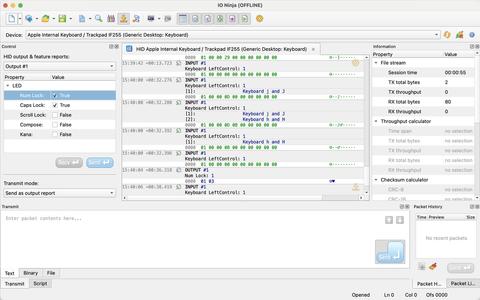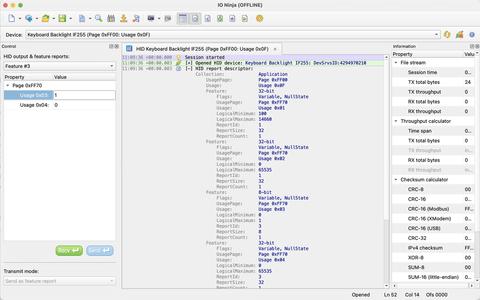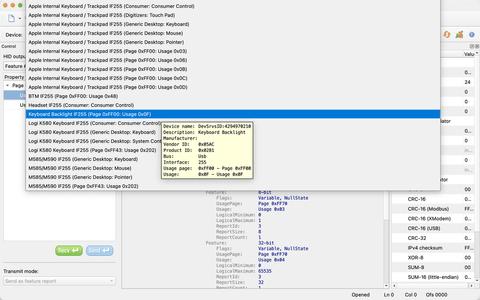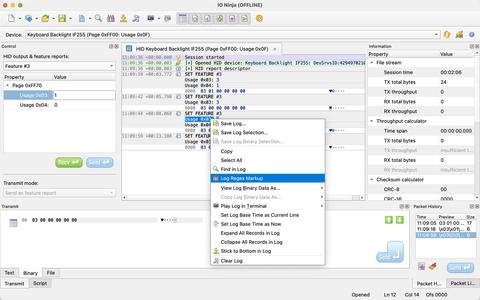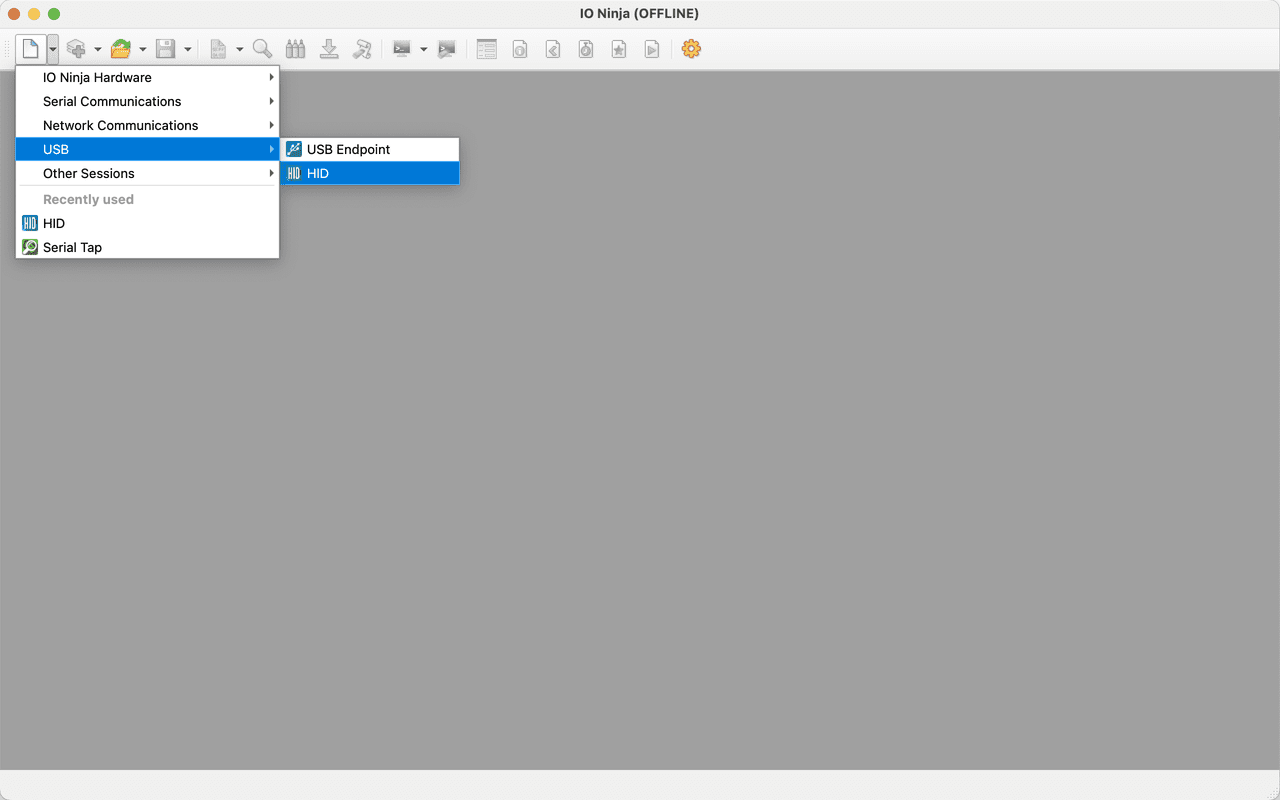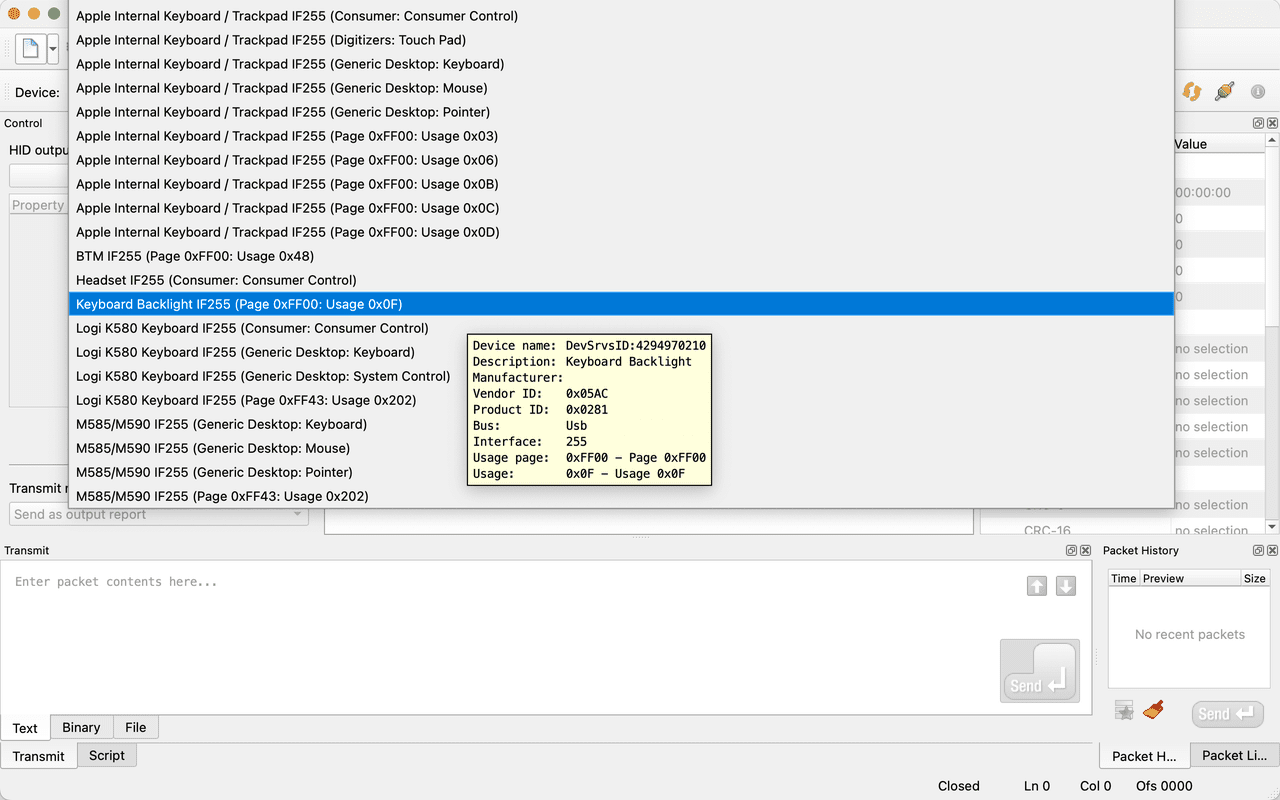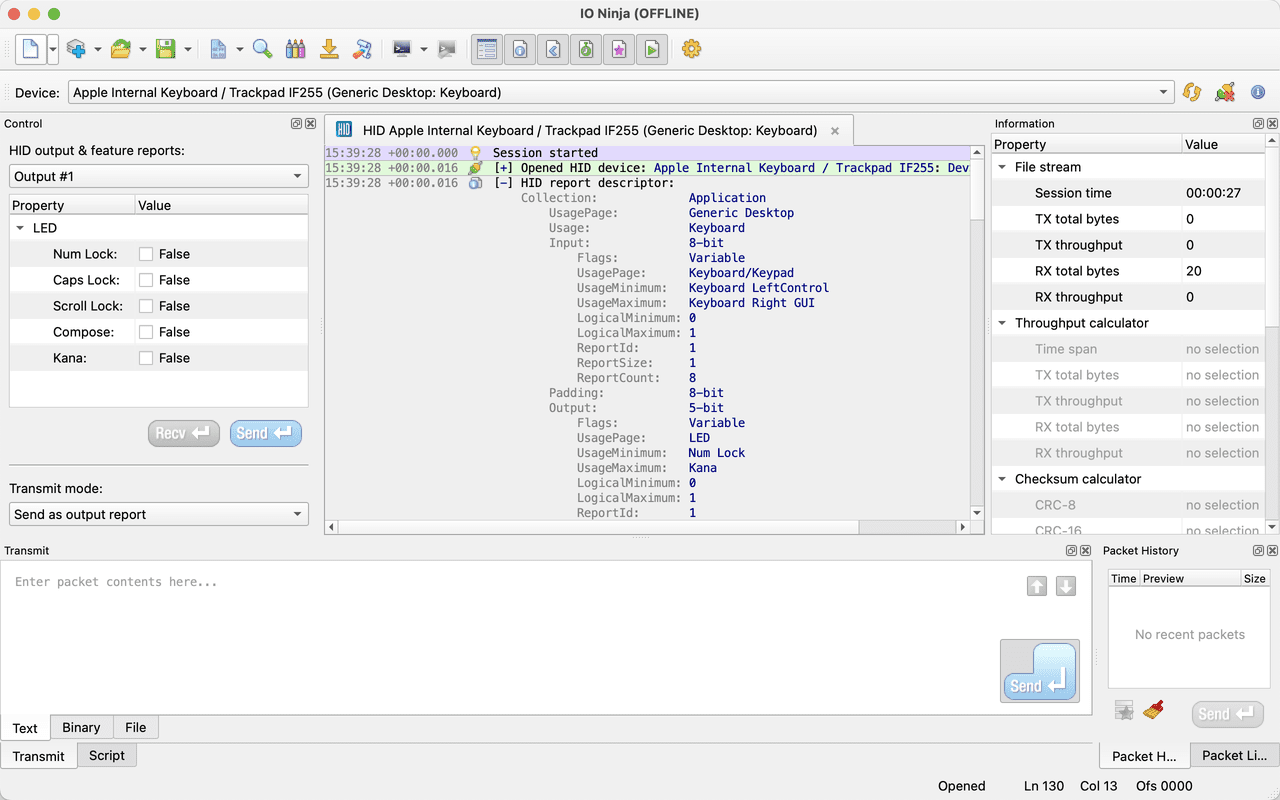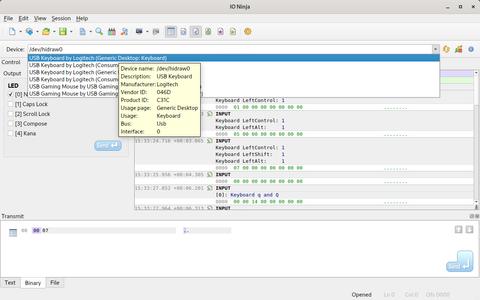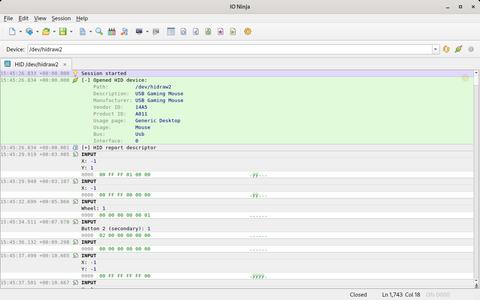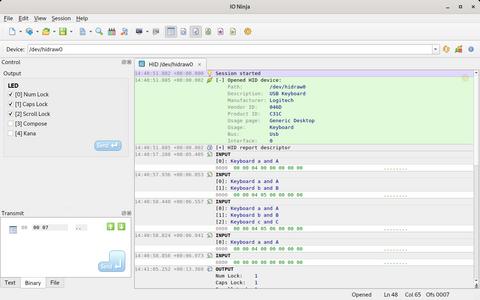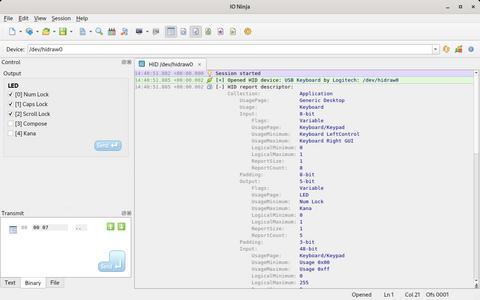HID Terminal
Communicate with HID DevicesThe HID Terminal plugin is a powerful tool designed for direct low-level communication with Human Interface Devices (HID). HID devices, such as keyboards, mice, and card readers, operate over USB or Bluetooth and share unique properties. The HID Terminal plugin leverages these properties to provide a streamlined and efficient way to interact with HID devices.
Why HID Terminal?
Easy HID Communication
The HID Terminal plugin provides a simple yet powerful interface for sending and receiving data from HID devices directly within IO Ninja. Users can open a session with a connected HID device, monitor incoming reports in real time, and send custom output or feature reports through an intuitive UI. The logging functionality ensures that all communication is recorded, allowing for easy debugging and analysis.
Input, Output, and Feature Reports
One of the key features of the HID Terminal is its ability to parse and interpret HID reports. Each HID device provides a report descriptor that defines how data is structured. HID Monitor decodes these reports, presenting not just raw byte streams but also human-readable representations of their contents.
Detailed Information for All Available Devices
HID Terminal provides detailed information on all available HID devices. By hovering over an option on the dropdown menu, you can see important information about the device. In addition, when you begin a new capture, device info is printed at the start of the log, along with the report descriptor mentioned above.
Powerful & Beautiful Logging Engine
The Ninja Scroll logging engine is the heart of IO Ninja! It offers many unique and useful features you won't find in other HID terminals, such as interleaving binary data with informational messages for a clear timeline of events, switching between hex-view and plain-text view of binary data, a regex markup engine for highlighting data based on regular expressions, and many others!
Versatile Transmission Facilities
IO Ninja features convenient and powerful tools for preparing HID packets before transmission. We offer a plain text editor with support for C ESC-sequences to encode special characters, a modern Unicode-enabled hex editor, and a file transmit feature.
A history of recently transmitted HID packets is maintained, and you can also build your own libraries of commonly used packets — then send those packets with a mouse click!
Getting Started
Documentation
See Also
| Plugin | Relevance |
|---|---|
| Allows capturing low-level communications on a HID device | |
| Allows low-level interactions with endpoints on any USB device. | |
| Allows capturing low-level communications on any USB device. |
